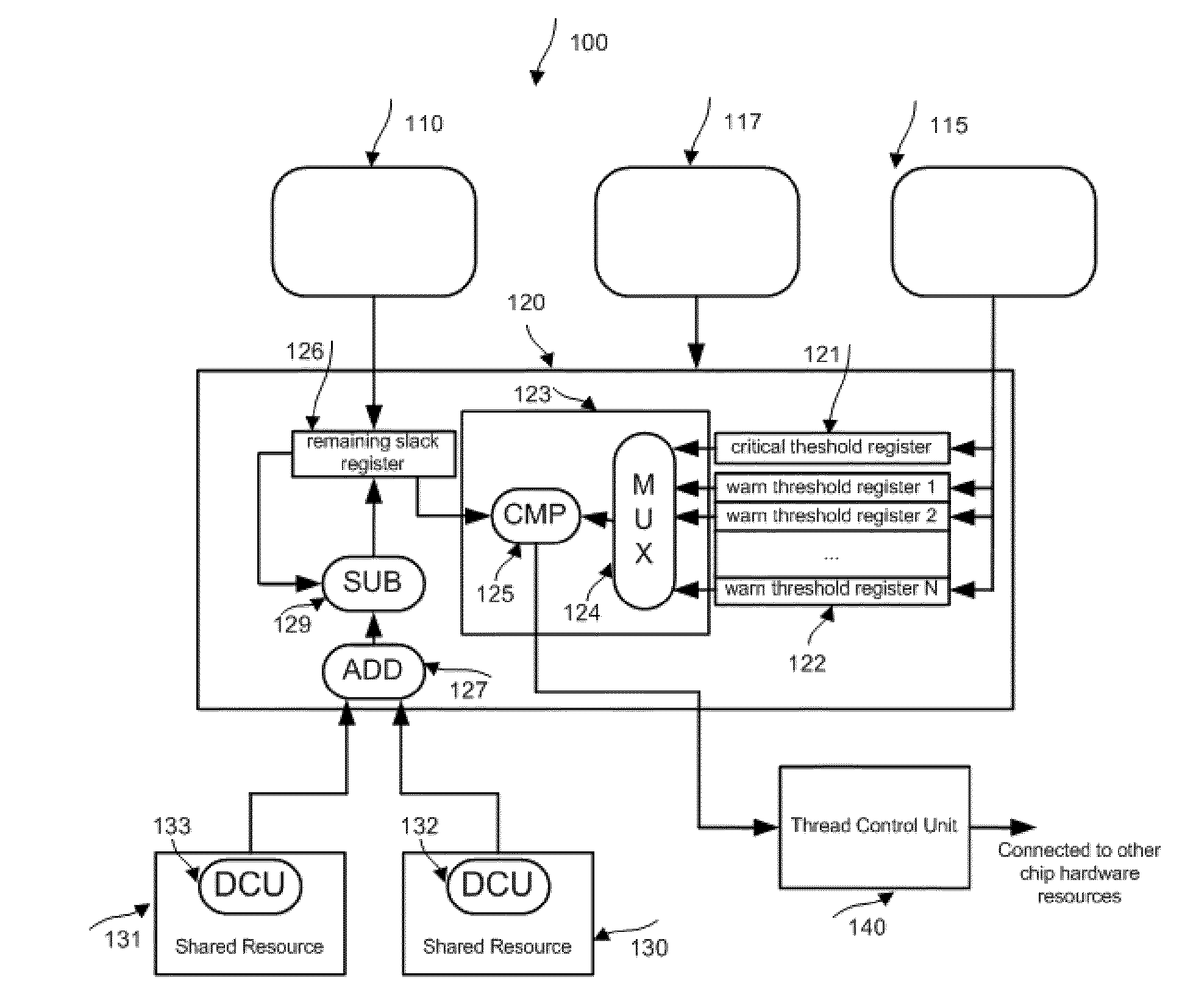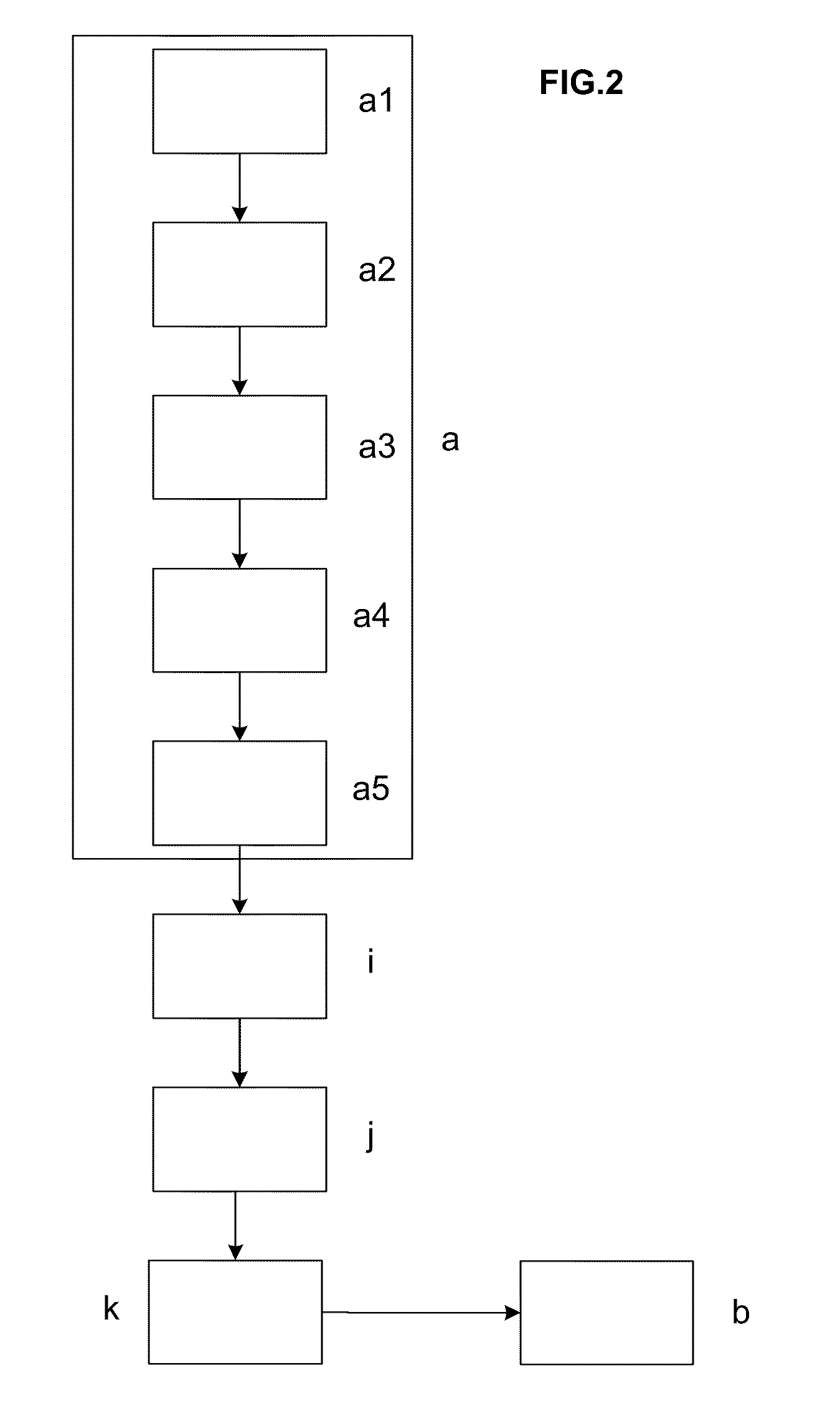Multithreaded processor and a mechanism and a method for executing one hard real-time task in a multithreaded processor
a multi-threaded processor and real-time task technology, applied in multi-programming arrangements, program control, instruments, etc., can solve problems such as the potential delay of the task of hr
- Summary
- Abstract
- Description
- Claims
- Application Information
AI Technical Summary
Benefits of technology
Problems solved by technology
Method used
Image
Examples
example 1
[0091]Next, we show an example of MT architecture with several shared resources that allows executing one HRT task and two NHRT tasks according to the invention. The presented invention, however, can be applied to an arbitrary number of shared resources and NHRT tasks.
[0092]FIG. 5 shows a multicore architecture 200 having three computation cores 201, 202 and 203, in which each core can execute only one thread at a time. All cores are connected to a Shared Functional Unit (SFU) 230 by an interconnection network. The interconnection network is composed of two data buses: core bus 210, a Shared Functional Unit bus 211; several control channels 212; and an arbiter 220.
[0093]In said architecture, the aim is to execute three tasks, one of which is a Hard Real-Time (HRT) task. In this case, the WCET of the HRT task is computed assuming that it has all the shared resource always available, that is, the Shared Functional Unit and the Interconnection Network.
[0094]In its normal behavior, when...
example 2
[0102]In the discussion in Example 1 it is assumed, without lost of generality that the global delay equals the local delay, Gd=Ld. That a delay of a given amount of cycles in the execution of a given instruction of the HRT task translates into a delay of the execution of the HRT task of at most the same number of cycles. Depending on the execution model, this cannot be the case. The only change to add in the invention to allow a global delay greater than the local delay is a map function that maps the local delay in the proper global delay, f(local delay)=global delay.
[0103]FIG. 6 shows the changes to add to the description of the components of the invention, shown in FIG. 4, in order to support this extra functionality. From FIG. 4 the only changes required are in the connection between the Shared Resources, 130 and 131, and the logic to combine 127 all the local delays coming from all Delay Control Units 132 and 133 in all shared resources. In FIG. 6 module 327 correspond to modu...
PUM
 Login to View More
Login to View More Abstract
Description
Claims
Application Information
 Login to View More
Login to View More - R&D
- Intellectual Property
- Life Sciences
- Materials
- Tech Scout
- Unparalleled Data Quality
- Higher Quality Content
- 60% Fewer Hallucinations
Browse by: Latest US Patents, China's latest patents, Technical Efficacy Thesaurus, Application Domain, Technology Topic, Popular Technical Reports.
© 2025 PatSnap. All rights reserved.Legal|Privacy policy|Modern Slavery Act Transparency Statement|Sitemap|About US| Contact US: help@patsnap.com



